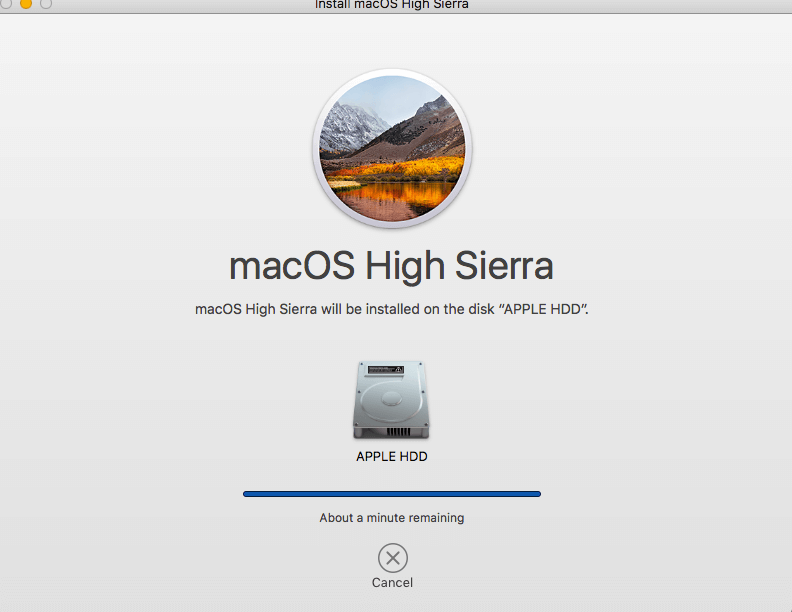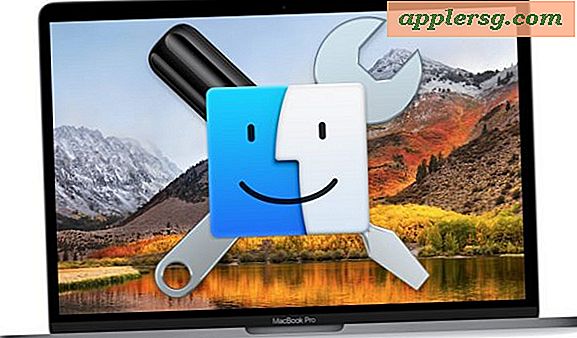
Plug in your macOS High Sierra bootable flash drive. With the device powered off, disconnect any external hard drives and flash drives. Step 1 How to Install macOS High Sierra.
The name 'High Sierra' refers to the High Sierra region in California.Following on from macOS Sierra, its iterative name also alludes to its status as a. MacOS High Sierra was announced at the WWDC 2017 on Jand was released on September 25, 2017. A.With the final release of Mojave, this tutorial is now out of date, see the new tutorial for installing Mojave instead!macOS High Sierra (version 10.13) is the fourteenth major release of macOS, Apple Inc.s desktop operating system for Macintosh computers. However Apple have made it harder to install the latest OS on your Mac. When you see the boot selection screen as shown, release the option key.We are not selling MacOS High Sierra, you can download and install MacOS for free.

High Sierra Er Full 5GB Version
If you received the 16MB version, follow the instructions here to get the full 5GB version instead.Now run this script in order to create HighSierra.iso from the installer. Some people will end up with a 16MB installer, and some will receive the full 5GB installer (nobody knows why yet). First step: Create an installation ISOOn a Mac machine, download the macOS High Sierra installer from the App Store (this will download it into your Applications folder).Check the size of the completed download. Your Proxmox host computer must have an Intel CPU at least as new as Penryn (I believe you would need a a custom Mac kernel in order to use an AMD CPU).
Iso file extension, this is actually a hard disk image. Prepare a Clover imageWe’ll be using Clover as a bootloader for High Sierra.Download this Clover disk image (that I built using kholia’s build script from Clover r4428), unpack it, and upload it to Proxmox’s ISO store at /var/lib/vz/template/iso. Upload the ISO to your Proxmox server’s ISO store (typically /var/lib/vz/template/iso).

Add “,cache=unsafe” in its place. Add these two lines, being sure to subtitute the OSK you extracted earlier into the right place: machine: pc-q35-2.11Args: -device isa-applesmc,osk="THE-OSK-YOU-EXTRACTED-GOES-HERE" -smbios type=2 -cpu Penryn,kvm=on,vendor=GenuineIntel,+invtsc,vmware-cpuid-freq=onFind the two lines that define the CDROM drives (ide0 and ide2), and remove the “,media=cdrom” part from both lines. First, SSH into your Proxmox server so we can make some edits to the configuration files.Edit /etc/pve/qemu-server/YOUR-VM-ID-HERE.conf (with nano or vim). Add an “EFI Disk” too.Don’t try to start the VM just yet. Add a second DVD drive at IDE0, set it to use your HighSierra.iso.
To make this change persist across Proxmox reboots, run: echo "options kvm ignore_msrs=Y" >/etc/modprobe.d/kvm.conf & update-initramfs -k all -uYou must now install a patched version of Proxmox’s OVMF library in order to be able to boot High Sierra. Configure ProxmoxOn Proxmox, run “echo 1 > /sys/module/kvm/parameters/ignore_msrs” to avoid a bootloop during macOS boot. This variant is supported by OS X.Return to the Options tab and change the boot order to put IDE2 (the Clover image) first.
If we were to add it to the VM’s args, then when Proxmox constructs its call to KVM to launch the VM, the device definition would appear before the pve-q35.cfg file is included, which defines the USB busses. This step is required to avoid scrambled graphics (Clover resolution must match OVMF resolution).High Sierra doesn’t support QEMU’s PS2 keyboard and mouse, but it does support the USB tablet we’ve selected on the Options page (thanks to Jack H for the tip about the tablet!) Edit /usr/share/qemu-server/pve-q35.cfg and add a USB keyboard to the bottom of the file to replace the PS/2 one it would provide by default: (Port 1 is occupied by the USB tablet that Proxmox will provide for us)We’ve added this to the config file instead of to the VM’s args directly. If pressing escape still doesn’t enter the menu, make sure you are using “machine: pc-q35-2.11” in your VM config and you do not have a USB keyboard defined in pve-q35.cfg (it seems that the OVMF menu only supports the default PS/2 keyboard).Follow the steps above to set the screen resolution to 1024×768 and “reset” to apply the new settings (not “continue”). If your keyboard doesn’t work, leave the Console tab, stop the VM, start the VM, then re-enter the console tab.
Choose your language.Our virtual hard drive needs to be erased/formatted before we can install to it, so select the Disk Utility option. You’ll have to do this each time you Start the VM.Press enter to boot the “Boot OS X Install from Install macOS High Sierra” entry and the installer should appear. After the reset, the resolution will be applied correctly. You can fix this by hitting Reset on your VM when you reach the Clover screen (not shutdown/start), and come back to Clover. Clover boot screenOn Proxmox 5.2, there’s currently a problem where the resolution you chose in the UEFI menu doesn’t actually get applied when you initially boot to Clover, which will cause booting macOS to fail (scrambled progress bar followed by a hang). It should now boot into Clover.
If you get these names wrong, you will erase the wrong disk and you’ll have to start the installation over again!).Now shut down the VM, and remove both the Clover and the Sierra CDROM drives from the Hardware tab. The Clover CD is the one with the “linux filesystem” on it, and the main hard disk is the one with the large Apple_APFS container partition on it.In my case these EFI partitions ended up being called disk0s1 and disk2s1 respectively, so I ran “sudo dd if=/dev/disk0s1 of=/dev/disk2s1” (N.B. Pop open Terminal and run “diskutil list” to see what drives we have available.Use “sudo dd if=source of=dest” to copy the EFI partition from the Clover CD and overwrite the EFI partition on the hard disk. Let’s install that to the hard drive instead. Answer the initial install questions, and you’ll be logged on! (Note that you’ll probably want to hold off on logging into your iCloud account until you’ve configured your SMBIOS to your liking in Clover Configurator)We’re currently booting using Clover from the attached CD image.



 0 kommentar(er)
0 kommentar(er)
